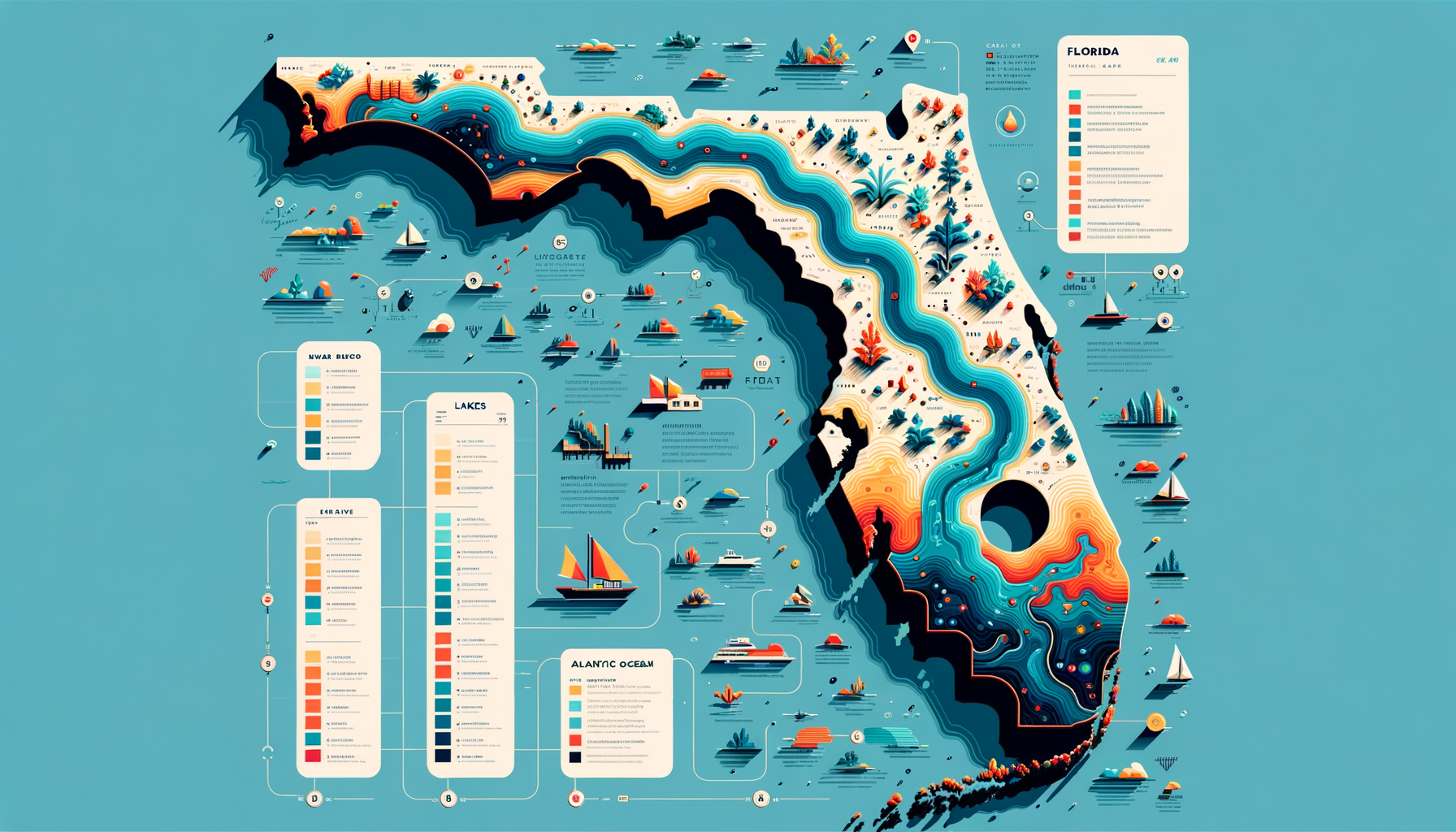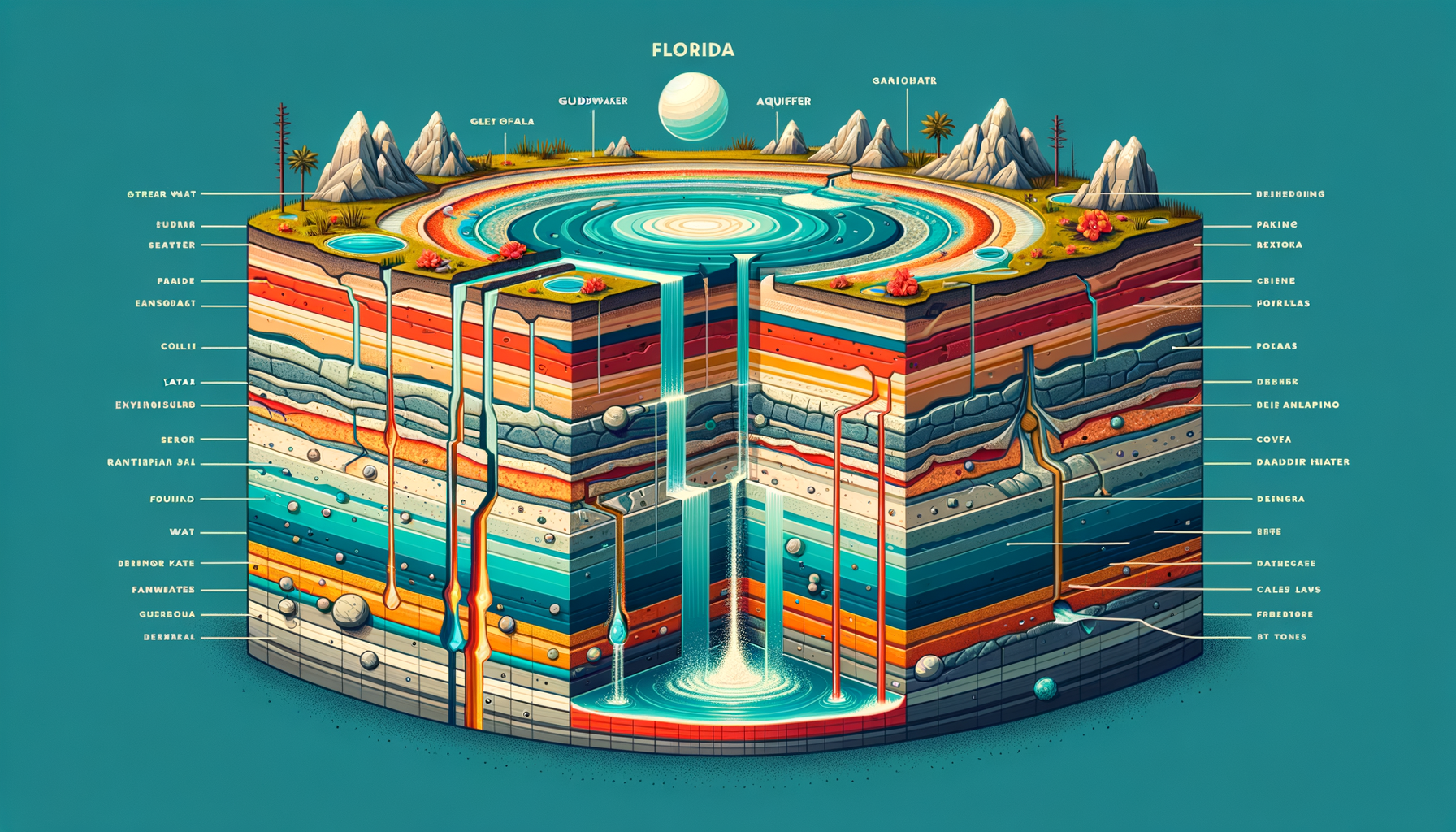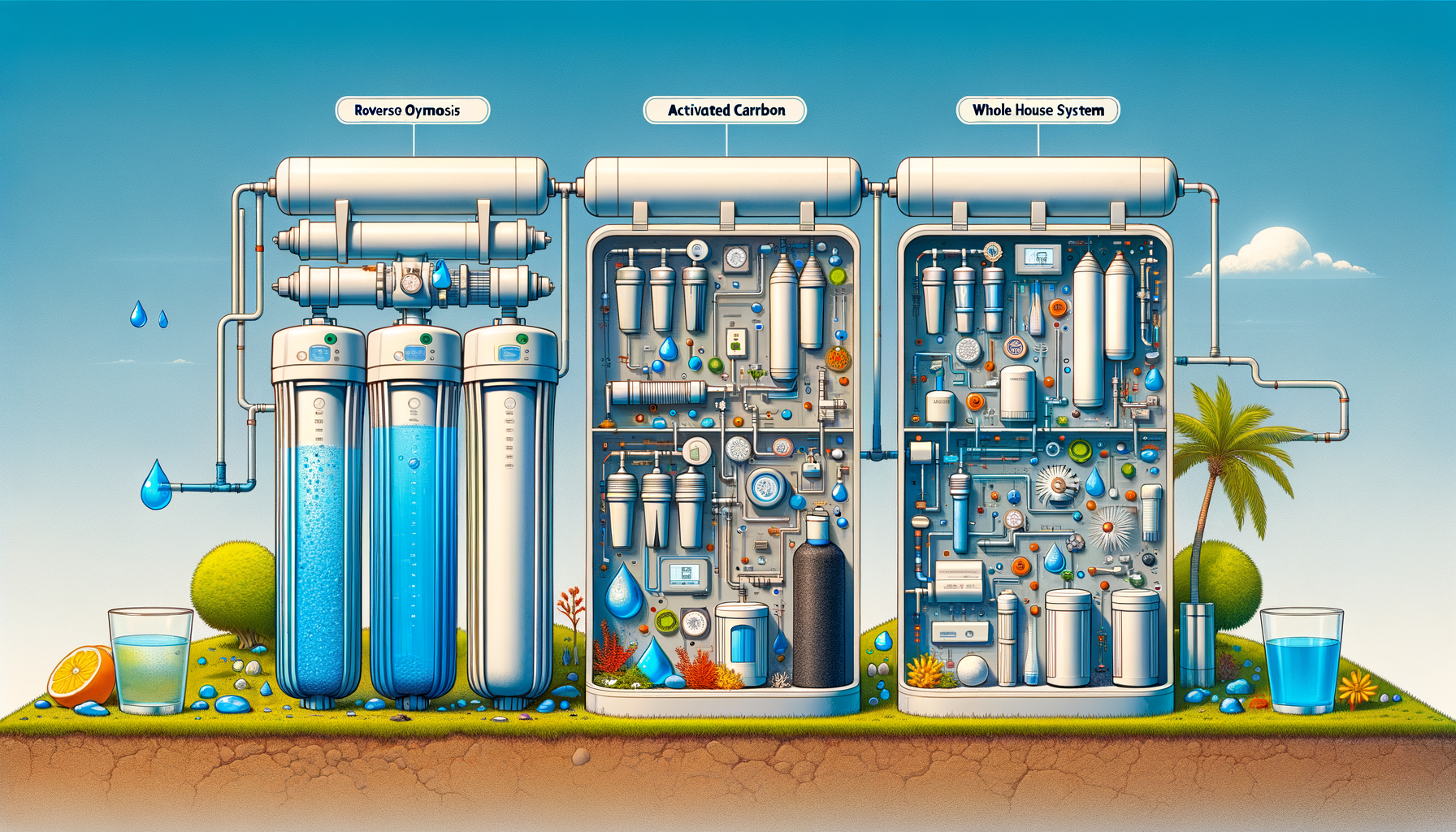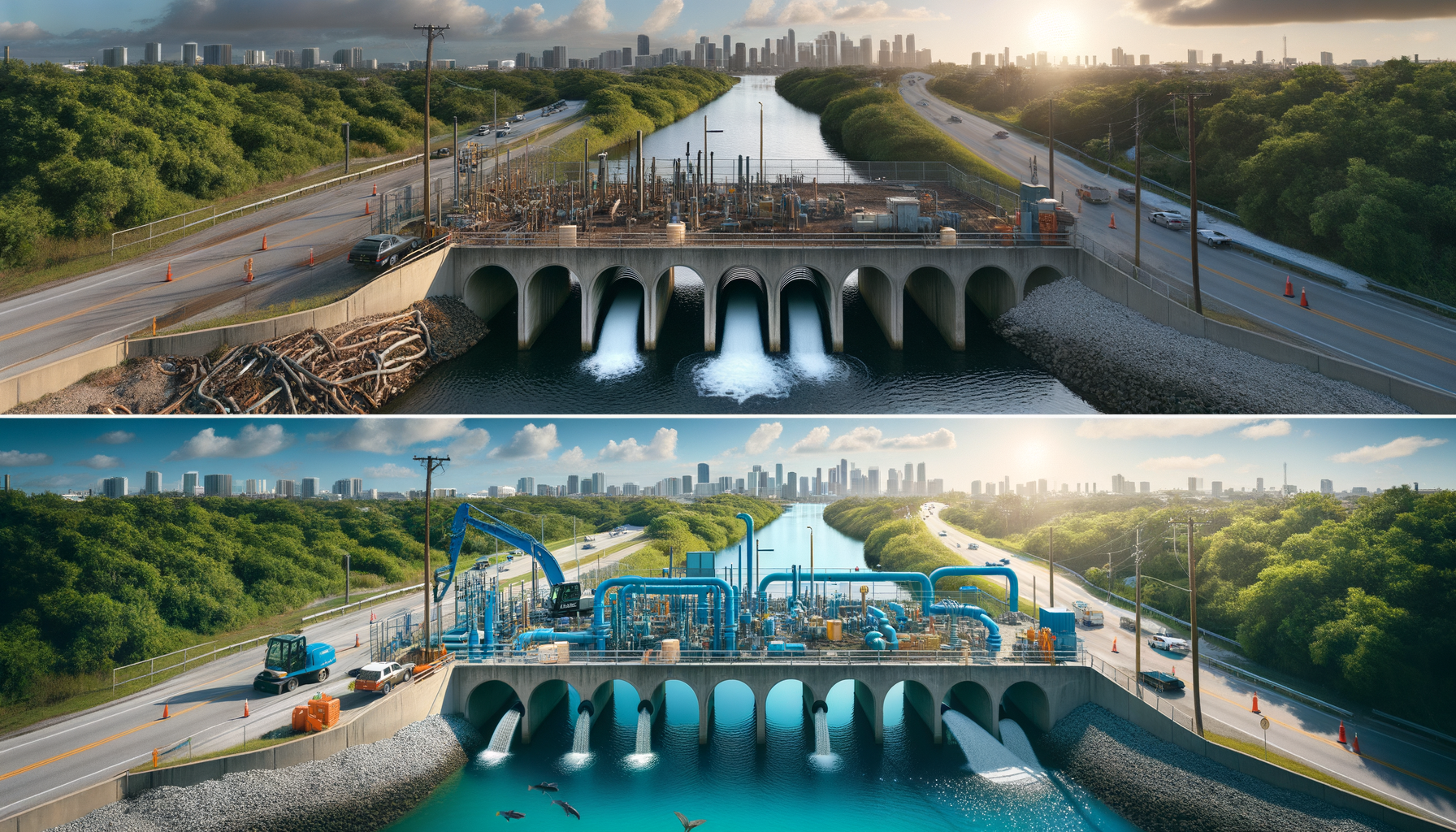Comprehensive Guide to Water Quality in Florida: Contaminants, Issues, and Water Filtration Solutions
by Ryan Moreau / updated February 13th, 2025
Florida is renowned for its extensive water resources—from the crystal-clear springs of the Suwannee River basin to the vast underground Floridan Aquifer that supplies much of the state’s drinking water. Despite this abundance, the state faces complex water quality challenges due to agricultural runoff, industrial pollution, aging infrastructure, and the unique vulnerabilities of its karst geology. In this comprehensive guide, we explore the common contaminants in Florida’s water, regional water quality challenges, and effective filtration solutions. Start by using our Water Quality Tool to get a customized analysis of your local water conditions.
Overview of Florida’s Water Sources
Florida’s water supply is as abundant as it is diverse. Key sources include:
- Floridan Aquifer System: One of the world’s most productive aquifers, it provides drinking water to nearly 10 million people in Florida.
- Surface Waters: Rivers such as the St. Johns, Suwannee, and Apalachicola serve critical roles in municipal water supply, agriculture, and industry.
- Springs: Florida is home to over 1,000 natural springs, the largest concentration on Earth, contributing to both water supply and tourism.
- Wetlands and Lakes: The Everglades and thousands of lakes play vital roles in flood control, water filtration, and supporting biodiversity.
Maintaining water quality across these varied sources requires vigilant monitoring and state-of-the-art treatment solutions, especially given Florida’s unique geological features and ecological importance.
Common Water Quality Contaminants in Florida
Florida’s water sources may contain a range of contaminants due to agricultural activities, urban development, industrial discharges, and the state’s karst geology. To better understand what might affect your area, start with our Water Quality Tool and then review these common issues:
1. Nitrates
Nitrates are a significant concern in Florida, often resulting from agricultural runoff, fertilizer use, and septic system leakage. Elevated nitrate levels in groundwater can pose health risks, particularly for infants, potentially resulting in methemoglobinemia or “blue baby syndrome.” Additionally, excess nitrates contribute to harmful algal blooms in surface waters, affecting ecosystems and drinking water quality.
Water Filtration Options for Nitrates: Reverse Osmosis Water Filters
2. Microbial Contaminants
Due to Florida’s warm climate and abundant surface waters, microbial contamination is a common issue, especially in areas served by private wells or with compromised septic systems. Pathogens such as bacteria, viruses, and parasites can enter water supplies, leading to gastrointestinal illnesses and other health problems.
Water Filtration Options for Microbial Contaminants: Reverse osmosis systems with UV disinfection or microfiltration methods effectively reduce microbial risks.
3. Arsenic
Arsenic can be found in some Florida groundwater sources, stemming from natural geological formations and historical pesticide use. Long-term exposure to arsenic may result in skin lesions, cancer, and cardiovascular diseases. Certain regions, particularly in Central Florida, have reported higher arsenic concentrations due to phosphate mining activities.
Water Filtration Options for Arsenic: Reverse Osmosis Water Filters, and specialized adsorption filters designed to capture arsenic.
4. Hard Water Minerals (Calcium and Magnesium)
Many areas in Florida experience hard water due to the limestone geology, which leads to elevated levels of calcium and magnesium in groundwater. Hard water can cause scale buildup in plumbing fixtures, reduce the efficiency of water heaters, and leave residues on dishes and laundry.
Water Filtration Options for Hard Water: Water Softeners using ion exchange processes.
5. Hydrogen Sulfide
Hydrogen sulfide gas is another common issue in Florida’s groundwater, particularly from wells. It produces a characteristic “rotten egg” smell and can tarnish silverware and discolor copper and brass utensils. Though generally not a health risk at typical concentrations, it impacts water aesthetics and usability.
Water Filtration Options for Hydrogen Sulfide: Oxidation filtration systems or activated carbon filters can help remove hydrogen sulfide from water.
6. Iron and Manganese
Iron and manganese are naturally occurring minerals that can be found in Florida’s groundwater. While not typically health hazards, they can cause staining of laundry and fixtures, as well as impart metallic tastes to water.
Water Filtration Options for Iron and Manganese: Oxidation filtration systems, greensand filters, or reverse osmosis units are effective in reducing these minerals.
7. Radon and Radium
Radon gas can be present in groundwater in certain areas of Florida due to the state’s geology. Radium, a radioactive metal, may also be found in some aquifers, particularly those in phosphate-rich regions. Both substances pose health risks upon long-term exposure, including increased cancer risk.
Water Filtration Options for Radon and Radium: Aeration systems can remove radon from water, while ion exchange and reverse osmosis systems can reduce radium levels.
8. Saltwater Intrusion
In coastal areas of Florida, over-pumping of freshwater aquifers can lead to saltwater intrusion, where seawater infiltrates freshwater supplies. This results in elevated levels of sodium and chloride, making water unsuitable for consumption without treatment. Saltwater intrusion threatens the sustainability of freshwater resources in cities like Miami and Tampa.
Water Filtration Options for Saltwater Intrusion: Desalination processes such as reverse osmosis are effective for removing salt from water.
9. Volatile Organic Compounds (VOCs)
In some areas, industrial activities and improper disposal of chemicals have led to VOC contamination of groundwater. Compounds such as benzene, toluene, and other solvents can pose significant health risks including liver and kidney damage, and are potential carcinogens. Regions near industrial sites or areas with heavy pesticide use are particularly at risk.
Water Filtration Options for VOCs: Activated Carbon Water Filters can effectively reduce VOC levels in water supplies.
Regional Water Quality Challenges in Florida
Florida’s diverse geography and extensive coastline contribute to various regional water quality challenges. According to the EPA and the Florida Department of Environmental Protection (FDEP), key challenges include:
1. South Florida: Saltwater Intrusion and Nutrient Pollution
South Florida faces significant issues with saltwater intrusion due to over-extraction of groundwater and rising sea levels. Municipalities like Miami are investing in alternative water sources and desalination technologies to combat this problem. Additionally, nutrient pollution from urban runoff and agricultural activities contributes to harmful algal blooms, affecting both water quality and marine life (EPA – Nutrient Pollution).
2. Central Florida: Agricultural Runoff and Sinkholes
Central Florida, known for its agricultural production, grapples with nitrate contamination from fertilizer use and livestock operations. The karst topography, characterized by sinkholes and underground caverns, allows for rapid transmission of contaminants into the aquifer. Efforts are underway to promote best management practices (BMPs) in agriculture to reduce nutrient loading.
3. North Florida: Septic Systems and Karst Vulnerability
In North Florida, many households rely on septic systems, which can leak and contaminate groundwater if not properly maintained. The porous limestone bedrock facilitates the quick spread of contaminants. Regional programs focus on upgrading septic systems and connecting homes to centralized sewer systems to mitigate risks.
4. The Everglades: Ecosystem Restoration and Water Quality
The Everglades ecosystem has been impacted by altered water flow and nutrient pollution. Restoration projects aim to improve water quality by reducing phosphorus levels and reestablishing natural hydrology. This not only benefits the environment but also enhances the quality of water supplies for surrounding communities.
General Water Characteristics in Florida
Beyond specific contaminants, Florida’s unique geology and climate result in distinctive water characteristics. Understanding these traits helps in selecting the right treatment solutions for your home:
1. Water Hardness
Water hardness is a common issue throughout Florida due to the state’s limestone aquifers, which release calcium and magnesium into the water. Hard water affects household appliances, reduces soap efficiency, and can lead to scale buildup in plumbing. Regions such as Tampa Bay and Orlando frequently report hard water conditions.
For households experiencing hard water, water softeners are recommended. If you’re unsure whether you need a water softener or which type fits your family’s needs, try our Water Softener Calculator for personalized guidance.
2. Corrosive Water Conditions
Some areas in Florida have slightly acidic groundwater, leading to corrosive water conditions. This can cause leaching of metals like lead and copper from older plumbing systems. Homes built before the 1980s are particularly susceptible to this issue, potentially posing health risks.
- Acidic Conditions: Water with a lower pH can corrode plumbing materials over time, leading to elevated metal levels in tap water.
- Infrastructure Vulnerability: Older buildings and systems are more prone to corrosion-related issues, necessitating regular water testing and system upgrades.
To mitigate corrosive conditions, installing an acid neutralizer or a pH adjustment system can help stabilize pH levels and protect your plumbing.
3. Impact of Karst Geology
Florida’s karst landscape, characterized by porous limestone and underground drainage systems, significantly influences water quality. While this geology creates spectacular springs and cave systems, it also allows for rapid transmission of surface contaminants into groundwater.
- Rapid Contaminant Spread: Pollutants from agricultural runoff, septic tanks, and industrial sites can quickly enter the aquifer.
- Sinkholes: The dissolution of limestone can lead to sinkholes, which may impact water infrastructure and introduce debris into water supplies.
Whole house water filtration systems—whether using reverse osmosis or other advanced methods—can help manage regional variations and maintain consistent water quality throughout your home.
Utilizing the Water Quality Tool for Florida Residents
Understanding your local water quality is essential for ensuring safe drinking water. Our Water Quality Tool enables Florida residents to:
- Enter their zip code for a detailed analysis of local water sources.
- View data on common contaminants in public and private water supplies.
- Receive personalized recommendations for filtration systems based on your water quality challenges.
By leveraging this tool, you can proactively address potential water quality issues specific to your region.
Recommended Filtration Solutions for Common Florida Contaminants
Based on the prevalent contaminants identified in Florida’s water sources, the following filtration systems are highly recommended:
1. Reverse Osmosis Systems
Reverse Osmosis Systems offer broad-spectrum removal of nitrates, arsenic, radium, and other contaminants. These systems are versatile for both under-sink and whole-house installations, making them suitable for addressing various water quality issues prevalent in Florida.
2. Water Softeners
Water Softeners using ion exchange processes effectively reduce hardness caused by calcium and magnesium. They protect your plumbing and appliances from scale buildup, enhancing their longevity and efficiency.
3. Activated Carbon Filters
Activated Carbon Filters are effective in removing hydrogen sulfide, VOCs, and improving taste and odor. They are ideal for mitigating issues related to industrial pollutants and organic contaminants.
4. Oxidation Filtration Systems
These systems are designed to remove iron, manganese, and hydrogen sulfide through oxidation and filtration. They are particularly useful in areas where these minerals are present in high concentrations.
Local Water Testing Services in Florida
Accurate water testing is essential to pinpoint the contaminants in your water supply. We recommend using SimpleLab for comprehensive water quality analysis. Their user-friendly kits and detailed lab reports empower you to make informed decisions about your water filtration system.
Additionally, the Florida Department of Health provides resources and guidance on water testing, especially for private well owners. Regular testing ensures that any changes in water quality are promptly identified and addressed.
Case Studies: Addressing Water Quality Issues in Florida
Real-world examples provide valuable insights into how various water quality challenges in Florida are being addressed:
1. Miami-Dade County: Combating Saltwater Intrusion
Miami-Dade County has implemented advanced monitoring and created a network of salinity control structures to prevent saltwater intrusion. Investments in reverse osmosis desalination plants have also expanded the availability of safe drinking water despite the pressures of sea-level rise (Miami-Dade Water Supply Projects).
2. Tampa Bay: Reducing Nutrient Pollution
The Tampa Bay region has made significant strides in reducing nutrient pollution through public-private partnerships. By upgrading wastewater treatment facilities and promoting the use of reclaimed water for irrigation, the area has seen marked improvements in water quality and a reduction in harmful algal blooms.
3. Rural Areas: Addressing Arsenic and Radium in Well Water
In rural parts of Florida, residents have tackled naturally occurring arsenic and radium in well water by installing home-based reverse osmosis systems. Community education programs have been essential in raising awareness and guiding residents toward effective solutions.
Call to Action
Florida’s diverse water sources—from the vast Floridan Aquifer to the intricate network of rivers and springs—demand proactive water quality management. Understanding your local water challenges and implementing effective filtration solutions is essential for safeguarding your household’s health.
Start by entering your zip code into our Water Quality Tool for a detailed analysis of your water supply. Then, explore our filter review articles to find the most effective system for your needs. Finally, confirm your water’s safety with comprehensive water testing services to ensure you have the clean, safe water your home deserves.







